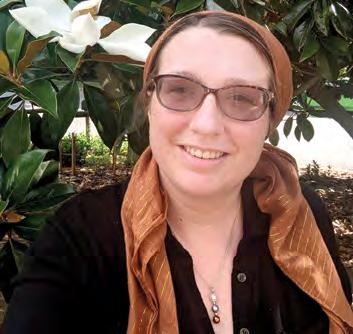
4 minute read
15 Minutes 4 Drawn Out
from INDY Week 9.8.21
by Indy Week
K L A K A C B
T
Last week, Thomasi
McDonald wrote about a developer’s plans to build hundreds of homes on the cusp of Durham’s West
Point on the Eno, with the potential for more flooding, affected water quality, and other environmental impacts. Our readers had a lot to say about this proposal.
“When will our City & County leaders take water quality & availability into consideration when approving these environmentally destructive developments?,” wrote Facebook commenter SHANNON CARNEY DAVID. “This particular development will poison water that we all need to survive.”
“This is unacceptable and should be a priority for our next Mayor and Council,” wrote commenter and candidate BREE L. DAVIS. “I am running for Mayor of Durham and have environmental & climate justice issues as a concern to be addressed with our future comprehensive plan. I am always available to discuss…I care.”
“My partner and I put in an offer on this house but found a petition about this Eno River project that evening and were able to retract it,” wrote commenter CRISTIN RYMAN. “Finding the petition actually resurfaced a lot of old memories I had forgotten about this land and it being under threat for years. It’s sad and shameful for so many reasons.”
“This person is literally complaining about infill development in their backyard - one that will be significantly denser than their own neighborhood,” wrote Twitter commenter DAVID WINEGAR. “What’s the alternative? Building this even further out, causing more GHG emissions?”
Also on Twitter, Durham City Councilmember CHARLIE REECE weighed in on the council’s plans to address the development and the request from citizens to take the matter to a public hearing.
“The case is still pending before the Board of Adjustment,” Reece wrote. “The board is only conducting virtual meetings right now due to COVID, and both parties to a case have to consent to a virtual hearing. In this case, both parties have not consented so the matter is delayed indefinitely.”
WANT TO SEE YOUR NAME IN BOLD? indyweek.com backtalk@indyweek.com @INDYWeekNC @indyweek
Raleigh
e
15 MINUTES
Jenn Peeler Truman, 31
Designer at Matthew Konar Architect, Raleigh
BY LEIGH TAUSS ltauss@indyweek.com
You seem to do a little bit of everything in the world of #ralpol—from being a City Council shortlist candidate for the District D appointment, to more recently being appointed to the Raleigh Transit Authority.
I usually describe my involvement in Raleigh politics as choosing to have an opinion and be loud, because I think too many people think things in the city will just take care of themselves. But the reality is if you don’t speak up, things just stay how they are. A lot of my work in an architecture firm ties into the city ordinances, so I work with the code every day and I’m familiar with how it affects small businesses firsthand.
As a millennial, where do you fall in the debate over Raleigh’s future?
I am pro-growth of our city because the opposite is not a good situation for anyone economically. When cities shrink, people wind up in a bad position in terms of not having a job or keeping their homes. Specifically, I’m pro growing in a way that allows us to think differently about our future. It’s better for our climate, our environment, and our health to be in walkable, dense communities, so I’m almost always saying we need more density and more walkability because those are the goals I think most millennials have as to how we want to live, how we want to work. Urban agriculture comes into that too because eating hyper-local is healthier for your body. Really, you’re trying to get all of the elements of your life into one small area. I’m a local person so you’ll always see me sporting the #supportlocal. Local businesses, local food, and how we connect to those things, how we connect to our job, home, and where we need to go grocery shopping—those are the basic needs. If we cover those needs in a way that’s climate-friendly and neighborly and fun or healthy to do—like biking to those places—then we’ve created a better city. And it’s important to think about all of the places in the city being able to do those things. Then you can start getting into the impact on climate, but it starts with being hyper-local.
PHOTO COURTESY OF THE SUBJECT
You have a pretty holistic way of thinking about these things.
As a designer, when we think about the infrastructures and systems that are around us in their complexity, there’s not one solution that is going to work to fix Raleigh’s issues. These are really big problems—whether we’re talking about growth and gentrification, climate change—we got here because of a lot of different, varied decisions, and it’s going to take a lot to get out of here. Some of the solutions are simple, like ending singlefamily zoning, but some are more complicated like our goals for reducing our carbon footprint and how we subsidize affordable housing.
What do you love most about living in Raleigh right now?
This city has a great balance. Right now from my house south of downtown, I can ride my bike with my kids and we can go to the park, go to the pool, go get food—it’s a great, family-oriented, balanced way to live. To me, it’s having that sweet spot of family life where you can work and live and play in a way that doesn’t always involve a car. W
DRAWN OUT
BY STEVE DAUGHERTY








